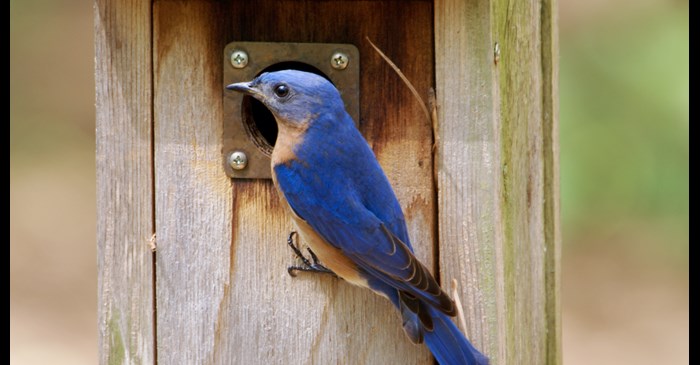While some bird species are able to hide out in grassy areas or foliage, many require more shelter when it comes to nesting. These cavity-nesting birds find fewer natural areas to nest, so one of the best ways to attract them is to create a nesting box. While many species are considered cavity-nesters some more familiar ones include a variety of nuthatches, chickadees, woodpeckers, wrens, flycatchers, warblers, bluebirds and sparrows - just to name a few. A nesting box should have the following features, according to the National Wildlife Federation:
- Constructed of natural wood with walls at least ¾" thick.
- An appropriately sized entrance hole that is far enough from the floor to create room for the nest.
- A sloped roof and drainage holes to keep out rain and moisture.
- Side or top panel for easy cleaning access.
- No outside perches where predators can lurk.
Feeling creative?
Nesting boxes can be as simple or elaborate as you like, as these photos illustrate.
What about late nesters?
While many birds nest in the spring, that’s not always the case. Baby birds can be hopping around your yard throughout multiple months. For example, American goldfinches begin mating in late June or July because they only feed their babies seeds, not insects. Here’s how you can accommodate late nesters:
Set up a bird bath:
Young birds love to splash around in the water. Keep this backyard essential out later for your later-nesting bird families.
Plant shrubs:
Baby birds need to be careful when learning to fly. Shrubs near the ground will give them a place to stay out of sight while they practice flapping their wings.
Make your backyard the perfect place for birds and you can enjoy wildlife sightings throughout the seasons. Shop Lyric for all your bird food needs.
